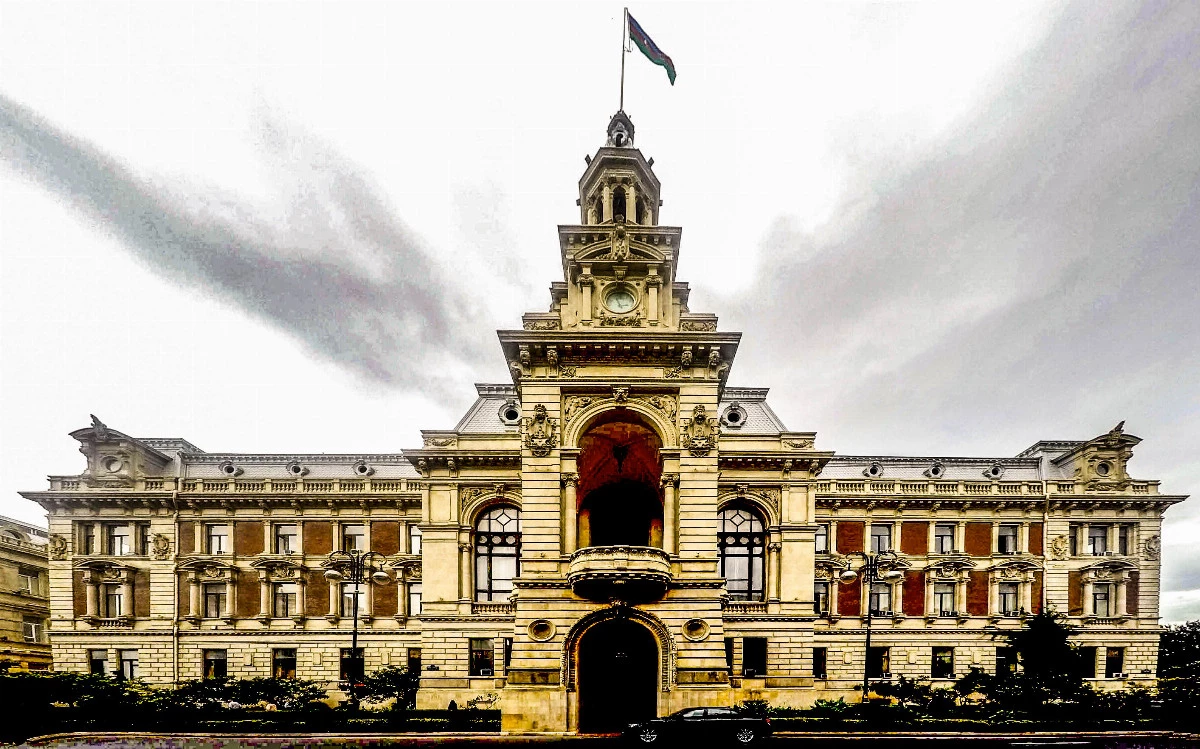
Throughout the 19th century, numerous Polish engineers, geologists, and architects flocked to the Caspian Sea's shores, as both Azerbaijan and the eastern parts of Poland were part of the Russian Empire. In addition to their compatriots exiled by Russian authorities to the "warm Siberia," these professionals sought employment, financial prosperity, and recognition. Baku became an attractive destination following the discovery of oil in the 1870s, transforming it into one of the world's fastest-growing cities. The burgeoning wealth of the city and its "oil barons” necessitated the construction of new, representative buildings.
Prominent among the Polish architects contributing to Baku's development during this period were Józef Gosławski, Kazimierz Skórewicz, Józef Płoszko, and Konstanty Borysoglebski, serving as the principal architects of Baku during its initial flourishing from the late 19th to the early 20th century.
Notable structures include the Palace of Zeynaladbin Taghiyev, designed by Józef Gosławski, which currently houses the National Museum of History of Azerbaijan. Gosławski's architectural vision blended elements of European classicism with Azerbaijan's architectural traditions. The Baku City Hall stands as a testament to Gosławski's craftsmanship, serving as one of his final projects before his demise in 1904. While Gosławski was unable to oversee its completion, architects Józef Płoszko and Kazimierz Skórewicz, both of Polish origin, assumed leadership in its construction posthumously. Designated as a national architectural monument since August 2, 2001, the building embodies a harmonious integration of Azerbaijani architectural heritage and cutting-edge European techniques.
Particularly noteworthy is Kazimierz Skórewicz's visionary approach, recognizing the extraordinary potential in blending Azerbaijani architectural traditions with modern European innovations. The former Rothschild's Office, now housing Azerbaijan's Ministry of Finances, stands as a tangible realization of Skórewicz's concept—an exquisite fusion of the exotic and the contemporary.
The Soviet occupation of Azerbaijan in 1920 marked the end of the unique connection between the Poles and Baku. Despite the geopolitical shifts, the architectural legacy crafted by Gosławski, Skórewicz, and their peers remains integral to the identity of Azerbaijan's capital. These enduring contributions stand as essential elements that continue to shape Baku's urban landscape to this day, earning it the byname "the oriental Paris."
The author is a Foreign Policy Officer at the Foundation for a Civic Hungary
